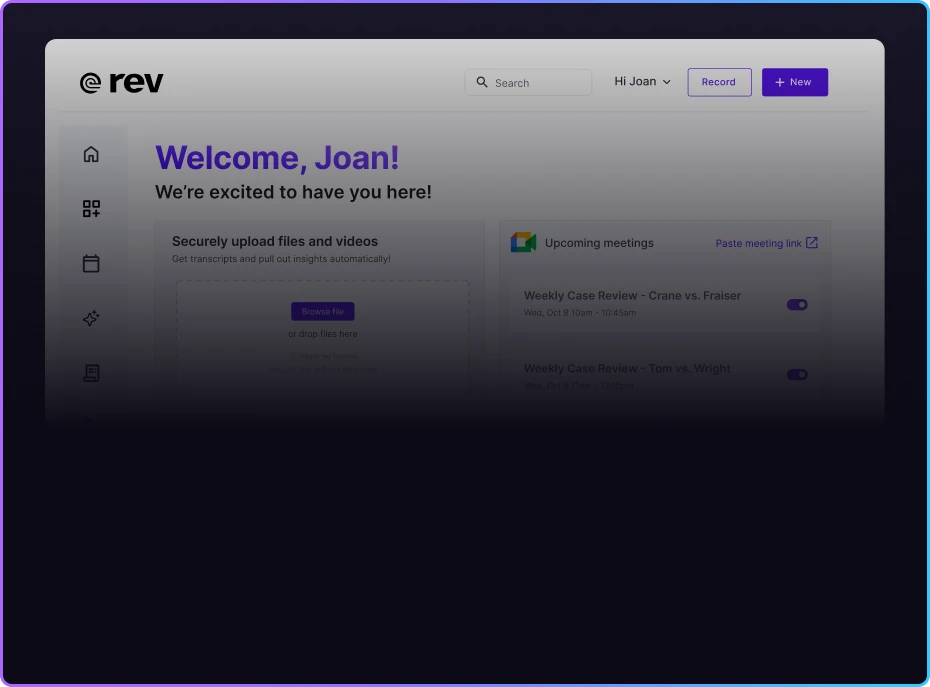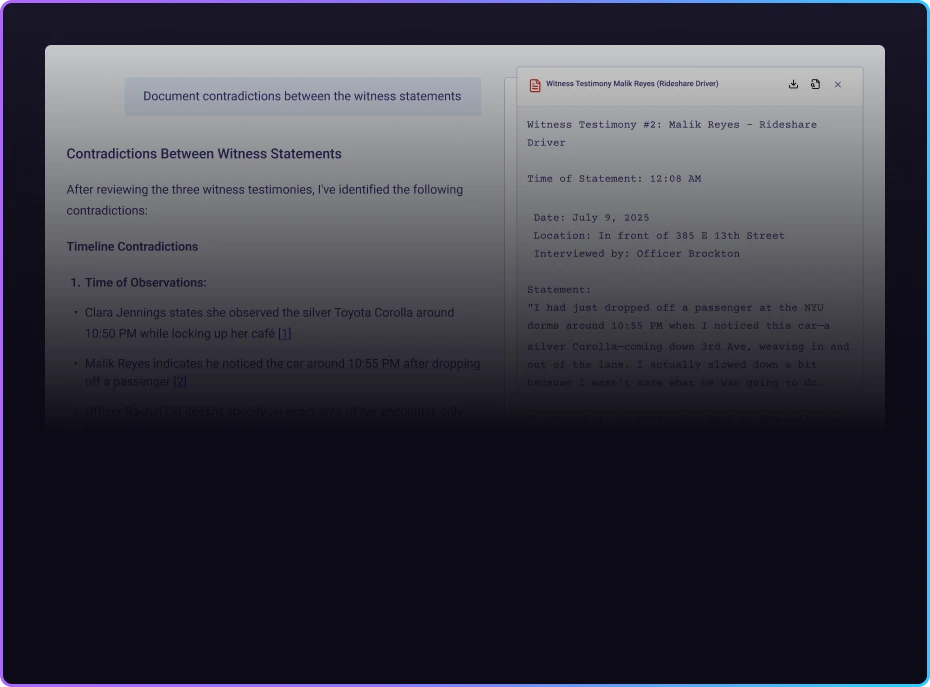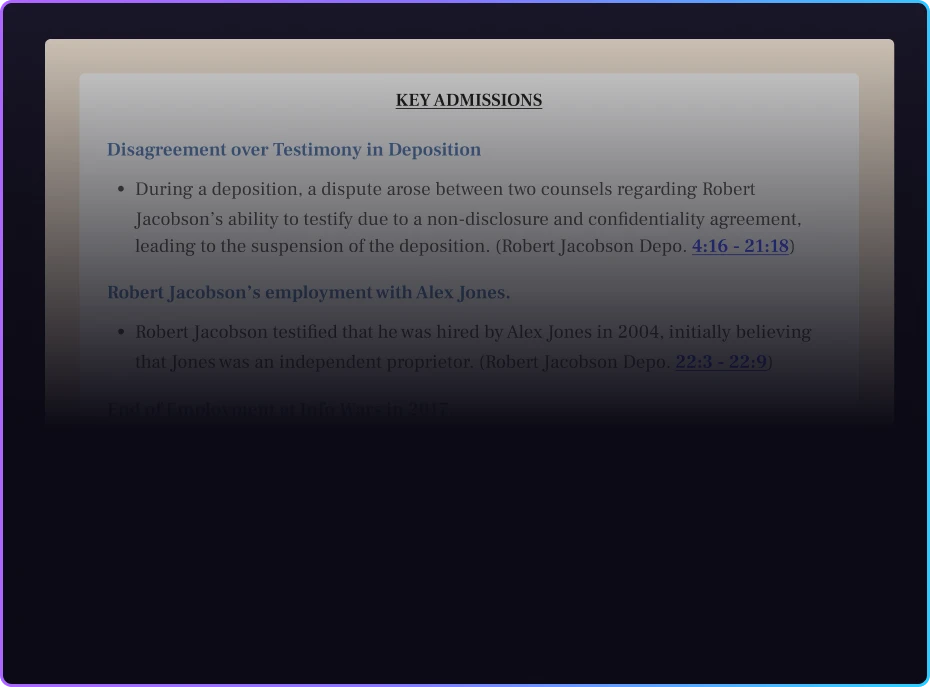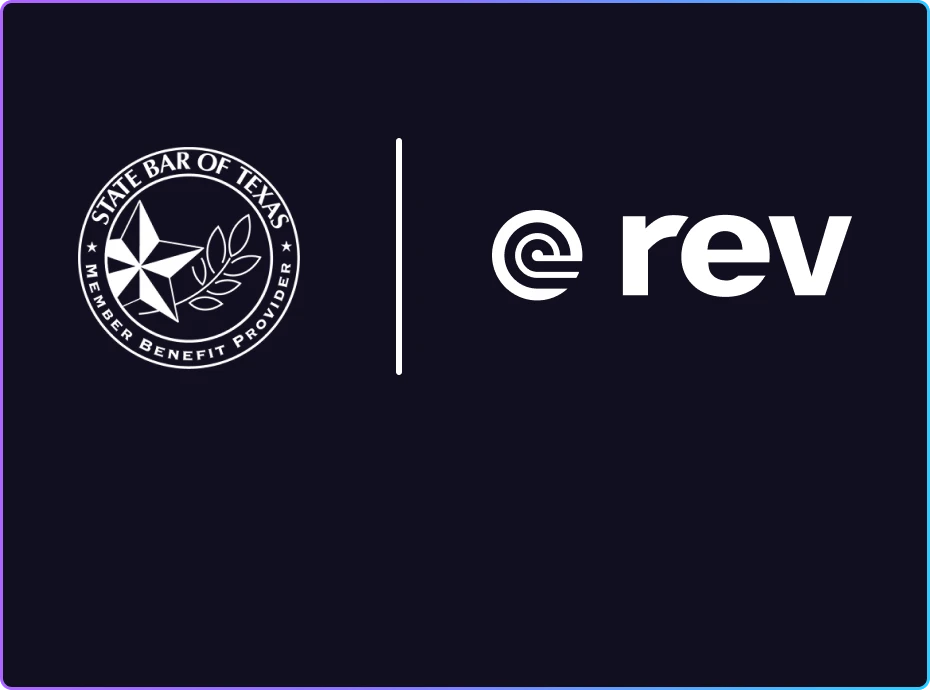The Court Reporter Shortage: Looking to the Future
The nationwide court reporter shortage brings significant challenges for the industry. Learn how technology can help you fill in the gaps.

Court reporters have long played a crucial role in the justice system, providing accurate, reliable records of all kinds of legal proceedings. These precise, detail-oriented professionals are trained to capture depositions, courtroom testimonies, and more in real time, preserving verbatim accounts of critical exchanges.
Yet, a crisis of availability has been brewing for over a decade in the court reporting industry. Demand for court reporters continues to remain steady, but trained professionals are becoming increasingly scarce.
What’s behind this court reporter shortage? And what does it mean for the legal system? We’ll explore these questions and more below.
The History of the Court Reporter
Modern court reporting has been around since the development of the stenotype machine in 1877. This was the first technology to allow real-time phonetic transcription. The ability to quickly convert speech to text in real time became an invaluable skill for preserving legal records, and set the stage for a fast-evolving legal field.
By the 1980s and ‘90s, computers had made real-time captioning possible for courtroom participants who were deaf or hard of hearing. The number of people entering the court reporting profession peaked around this time.
Why Is There a Court Reporter Shortage?
Today, there is a nationwide court reporter shortage because fewer people are entering the profession than leaving it. Only 200 new stenographers join the field each year, while 1,120 retire.
The reasons for this imbalance aren’t entirely clear, though many point to the rigorous requirements for the profession. For instance, most court reporters must be able to type at speeds of at least 200 words per minute with 97.5% accuracy. In addition, the average court reporter’s salary (while the median pay of $63,940 is higher than many other jobs) may not be high enough to offset the demands.
According to the National Court Reporters Association (NCRA), the average court reporter is 55 years old. There simply aren’t enough newly trained young reporters to replace those nearing retirement. Unsurprisingly, the number of people employed as court recorders has shrunk by more than two-thirds since its peak in the ‘90s. The court reporter shortage is especially problematic in large states like Texas and California, where the shrinking workforce of court reporters can’t keep up with growing case numbers.
Want to help solve this shortage? Learn how to become a court reporter.
Why Court Reporters Are Crucial
Court reporters provide a vital service within the justice system. Accuracy is perhaps nowhere more important than in law, so every testimony or legal proceeding related to a case must be carefully transcribed to provide a verbatim record. These transcriptions are used in investigations and as evidence in courtrooms. They’re especially critical for filing appeals, and the court reporter shortage has slowed the appeals process for many life-changing legal decisions, such as in child custody cases.
Verbatim court reporters are so important that citizens have a constitutional right to transcripts of their proceedings — even when they can’t afford to pay for them. That’s why, for instance, the shortage of court reporters in California courts sparked a lawsuit to protect low-income people.
Even where the consequences of the shortage aren’t so dramatic, the inability to find timely stenographers can slow down important civil cases. This makes life more difficult for civil litigators and their clients.
The State of the Legal Industry Today
Rumblings of a court reporter shortage are nothing new. For the past few decades, the legal industry has been preparing for this problem, seeking ways to curb the shortfall and adapt to new legal realities.
No one understands this better than Matt Riley, Executive Director at AAERT. "The main challenge facing users of court reporting services right now is the shortage of stenographers. While stenography is a valid way of making the legal record, there simply aren’t enough stenographers to meet demand, and stenographers continue to retire faster than new ones are being trained," says Riley.
"Fortunately, though, we now have a variety of other methods of court reporting that have been proven to provide the same levels of accuracy and professionalism."
Courts and other legal organizations are hard at work promoting careers and opportunities in court reporting. For instance, the Los Angeles Superior Court has recently invested in higher wages, bonuses, and some student loan forgiveness plans for court reporters.
States are even streamlining educational options, through accelerated online programs or on-the-job training. Since the pandemic, there has been a stronger push for using remote depositions whenever possible. These efforts are designed to make the work more accessible and appealing.
Legal Technology + Digital Court Reporting
In terms of how technology can transform court reporting, the option for remote work is only the tip of the iceberg. More advanced technologies can play an even larger role in filling in the gaps left by the court reporter shortage.
For instance, many court reporters can now log in remotely to provide real-time transcriptions over a secure connection. This reduces travel costs and broadens the pool of available reporters outside of a confined local area.
Artificial intelligence (AI) opens even greater possibilities. Where human stenographers aren’t available for every deposition or courtroom proceeding, AI-powered transcription services like Rev can provide highly accurate, fast transcriptions that’re ready for certification by a professional court reporter. These tools aren’t a replacement for trained human court reporters, but they can supplement their work and make it more efficient.
Is There a Future in Court Reporting?
Despite the shortage, court reporters will continue to play a vital role in the industry. Accurate, verbatim transcriptions are critical for many aspects of the legal process. Even as growth in the profession has slowed, the U.S. Bureau of Labor Statistics still predicts a 2% annual growth in job openings for court reporters and other simultaneous captioners.
Nonetheless, the court reporting profession is likely to change significantly. In some ways, the work will become easier and more flexible as improved electronic recordings and technology allow reporters to conduct and transcribe depositions remotely. Fast-track programs at court reporting schools or community colleges may also lower the barrier of entry, allowing young court reporters to enter the field sooner.
Where the work may change most, however, is in how court reporters rely on more advanced technology. With fewer professionals on hand amid a growing number of cases, many court reporters may shift toward reviewing and certifying AI transcriptions. They’ll work in tandem with AI tools to produce more transcripts at a faster pace — without sacrificing accuracy.
Soften the Blow of the Shortage
The court reporter shortage poses a nationwide challenge for the legal field, especially for court reporting agencies that can’t keep up with the transcription work. While ongoing recruitment is vital for bringing more workers into the profession, agencies should also look to technology for essential help here and now.
Rev provides powerful AI-assisted speech-to-text services, all in a format compatible with major court reporting software like Reporterbase, YESLAW, and CATalyst. Transcribe depositions or take notes in real time, all in a secure, compliant platform. Our AI-powered transcripts are 99% accurate and ready to certify, as fast as the same day.
The shortage is a challenge, but it doesn’t have to bring a fatal blow to your court reporting agency. Try out Rev’s court solutions today.
















